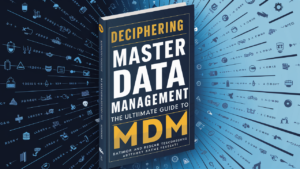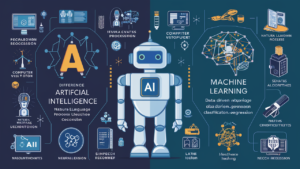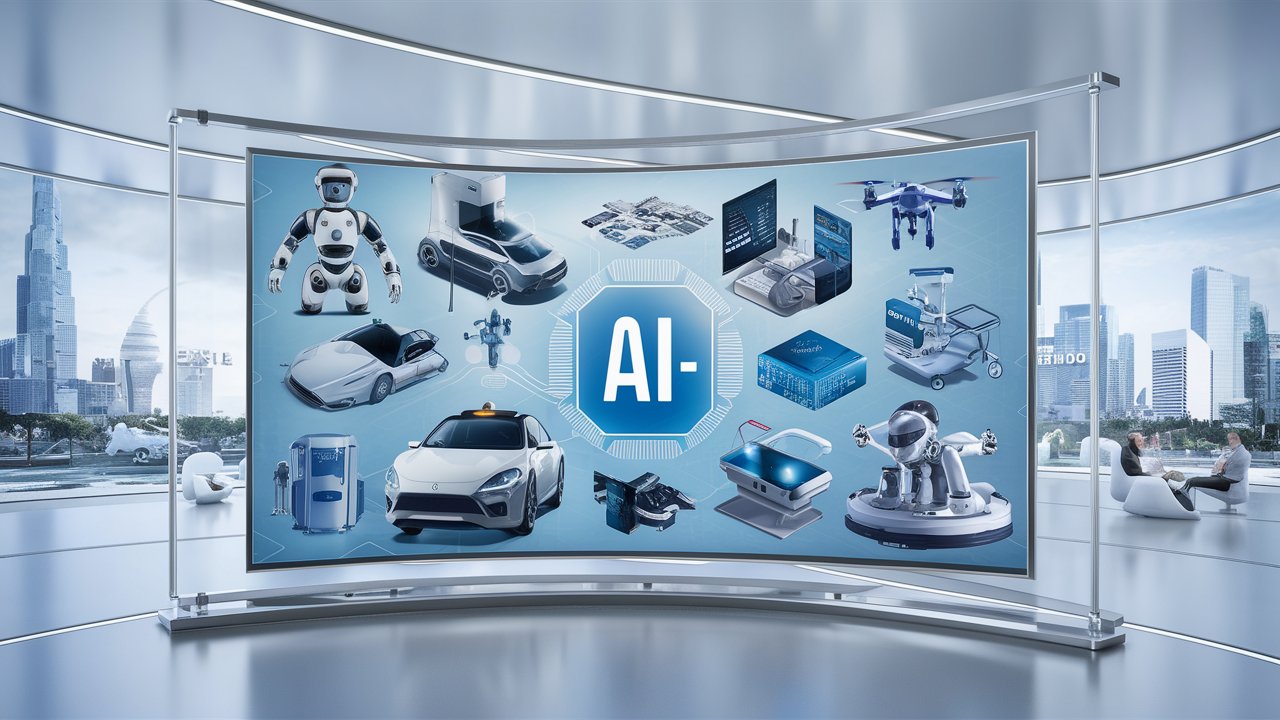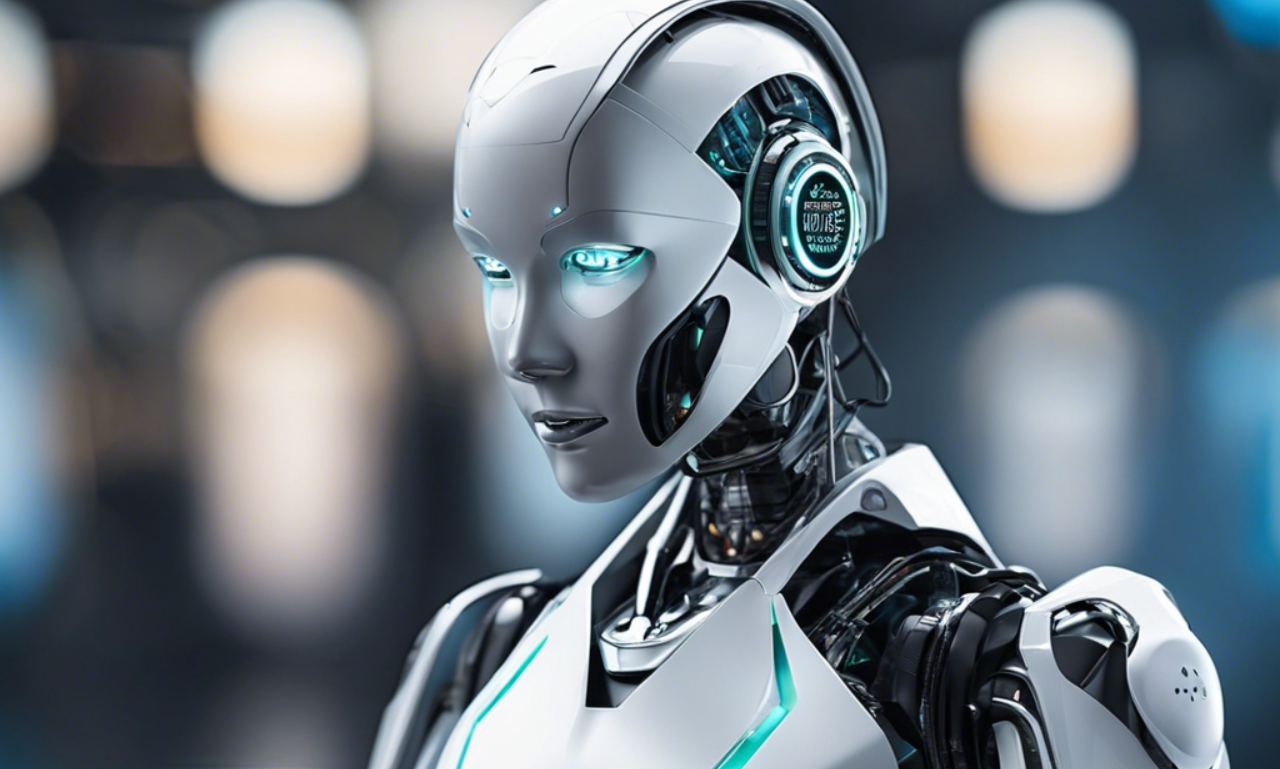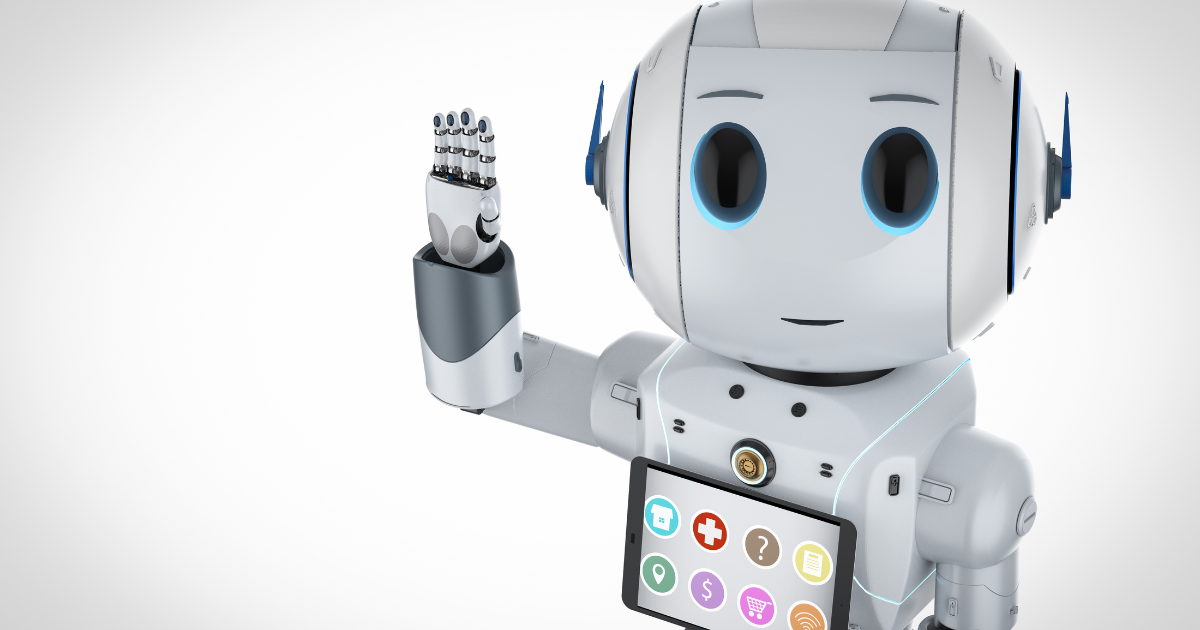Artificial Intelligence (AI) and Machine Learning (ML) are pivotal technologies shaping the modern world, yet they are often misunderstood. Understanding their differences is crucial for effectively leveraging their potential.
What is Artificial Intelligence?
Artificial Intelligence (AI) involves creating systems that can perform tasks requiring human intelligence, such as reasoning, learning, problem-solving, and language understanding. AI aims to develop machines that can think and act like humans.
Types of AI
- Narrow AI (Weak AI): Designed for specific tasks, such as virtual assistants (e.g., Siri, Alexa) and recommendation systems (e.g., Netflix, Amazon).
- General AI (Strong AI): Theoretical AI with human-like cognitive abilities capable of performing any intellectual task that a human can do.
- Artificial Superintelligence (ASI): Hypothetical AI surpassing human intelligence in all aspects, including creativity and wisdom.
Applications of AI
- Natural Language Processing (NLP): Enables machines to understand and generate human language (e.g., chatbots, language translation).
- Robotics: AI-driven robots for manufacturing, healthcare, and services (e.g., surgical robots, autonomous drones).
- Expert Systems: Mimic human decision-making in medicine and finance (e.g., IBM’s Watson).
- Computer Vision: AI systems that interpret visual information (e.g., facial recognition, autonomous vehicles).
What is Machine Learning?
Machine Learning (ML) is a subset of AI that focuses on algorithms allowing computers to learn from data and improve over time without explicit programming. It uses statistical techniques to identify patterns and make decisions.
Types of Machine Learning
- Supervised Learning: This method uses labelled data to train models for classification (e.g., spam detection) and regression (e.g., price prediction).
- Unsupervised Learning finds patterns in unlabeled data, such as clustering (e.g., customer segmentation) and dimensionality reduction.
- Semi-supervised Learning: Combines labelled and unlabeled data to enhance learning accuracy.
- Reinforcement Learning: Trains models through rewards and penalties for decision-making (e.g., AlphaGo, robotic control).
Applications of ML
- Predictive Analytics: Forecasts future events using historical data (e.g., financial forecasting, risk assessment).
- Image Recognition: Identifies objects in images (e.g., medical imaging, autonomous vehicles).
- Recommendation Systems: Provides personalized suggestions (e.g., e-commerce, streaming services).
- Anomaly Detection: Detects unusual patterns (e.g., fraud detection, network security).
Critical Differences Between AI and ML
Conceptual Differences
-
Scope:
- AI: An overarching concept aiming to create systems that can perform tasks requiring human intelligence. It encompasses various subfields, including ML, robotics, and natural language processing.
- ML: A subset of AI-focused specifically on algorithms that enable machines to learn from and make data-based decisions.
-
Goals and Objectives:
- AI: Aims to create intelligent systems capable of performing a wide range of tasks autonomously and intelligently, mimicking human cognitive functions.
- ML: Aims to develop models that can learn from data, improve over time, and make predictions or decisions without explicit programming.
Technical Differences
-
Methodologies:
- AI: Utilizes various techniques, including symbolic reasoning, expert systems, neural networks, and evolutionary algorithms.
- ML: Primarily uses statistical methods and data-driven approaches, such as regression, clustering, decision trees, and deep learning.
-
Tools and Techniques:
- AI: Involves a broader set of tools, including rule-based systems, heuristic search, and optimization algorithms.
- ML: Focuses on specific tools like TensorFlow, PyTorch, sci-kit-learn, and various statistical software for model training and evaluation.
Implementation Differences
-
Real-World Applications:
- AI is used in various applications, from autonomous vehicles and virtual assistants to complex problem-solving systems in healthcare and finance.
- ML is Often used in applications requiring data analysis and pattern recognition, such as recommendation systems, fraud detection, and predictive analytics.
-
Scalability and Adaptability:
- AI: Due to the diverse range of techniques and broader goals, it can be more complex to scale and adapt.
- ML: Typically more straightforward to scale and adapt, focusing on improving performance through data-driven learning.
Interrelation Between AI and ML
How ML Fits into AI
Machine Learning (ML) is a critical subset of Artificial Intelligence (AI). While AI aims to create systems capable of performing tasks that require human intelligence, ML provides the mechanisms for these systems to learn and improve from experience. ML algorithms and techniques enable AI systems to analyze data, recognize patterns, and make decisions with minimal human intervention.
The Role of ML in Achieving AI Goals
ML plays a vital role in the advancement of AI by offering the following contributions:
-
Data-Driven Learning:
- ML algorithms enable AI systems to learn from vast data, improving accuracy and performance. This data-driven approach is essential for natural language processing and image recognition tasks.
-
Adaptability:
- ML allows AI systems to adapt to new information and changing environments. For example, recommendation systems use ML to update their suggestions based on user behavior and preferences.
-
Predictive Capabilities:
- ML enhances AI’s ability to make accurate predictions. ML models predict outcomes based on historical data and real-time inputs in applications like financial forecasting, healthcare diagnostics, and autonomous driving.
Examples of AI Systems Utilizing ML
-
Virtual Assistants:
- AI-powered virtual assistants, such as Siri, Alexa, and Google Assistant, use ML algorithms to understand and respond to user queries, improve speech recognition, and personalize responses based on user behavior.
-
Autonomous Vehicles:
- Self-driving cars rely on ML to interpret sensor data, recognize objects, and make real-time driving decisions. ML models are trained on extensive datasets to handle various driving scenarios and improve safety.
-
Healthcare Diagnostics:
- AI systems in healthcare use ML to analyze medical images, identify patterns, and assist in diagnosing diseases. For example, ML algorithms help detect anomalies in X-rays and MRIs, aiding radiologists in their evaluations.
-
Fraud Detection:
- Financial institutions use AI systems with ML to detect fraudulent transactions. ML models analyze transaction patterns and flag unusual activities, improving the accuracy and speed of fraud detection.
By integrating ML into AI systems, we harness the power of data to create intelligent, adaptive, and predictive solutions that drive innovation across various industries. The synergy between AI and ML is fundamental to the ongoing technological advancements, making systems more innovative and efficient.
Understanding the differences between Artificial Intelligence (AI) and Machine Learning (ML) is crucial in navigating the technological landscape. While AI encompasses broader goals of mimicking human behaviour, ML focuses on algorithms enabling machines to learn from data. ML is a foundational component of AI, driving advancements in various domains.
Challenges such as ethical considerations and data quality persist, but future trends indicate promising advancements driven by emerging technologies and integration with other domains. By embracing AI and ML responsibly, we can unlock their potential to revolutionize industries and address societal challenges.






